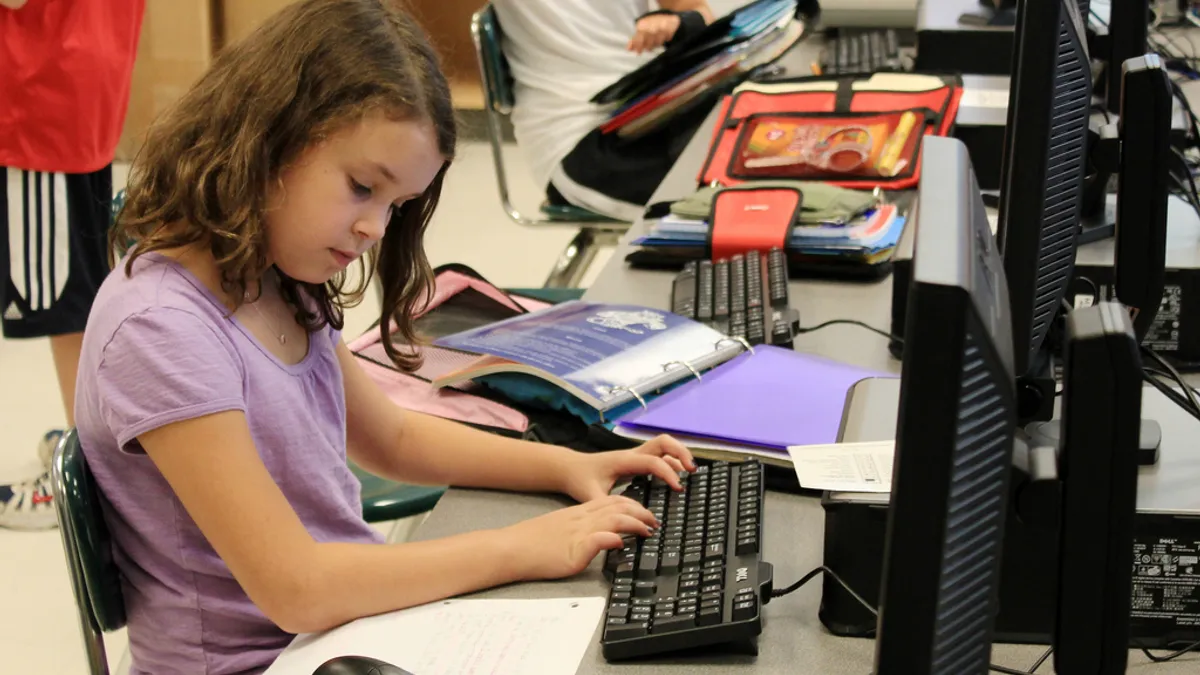Dive Brief:
- The Morris School District in New Jersey has 35% of its students enrolled in the free or reduced-price lunch program, and low-income students, along with English learners, have become a primary focus for equity efforts aimed at improving outcomes for all students.
- EdSurge reports the district shifted to blended learning in earnest in 2015, and most students use computers daily, often through station rotation, which gives teachers a chance to connect with students in small groups while their peers work independently.
- The Morris Educational Foundation has helped ensure all students have access to Wi-Fi at home and free Chromebooks, and teachers say the focus on blended learning has created room for more inclusive classrooms, where English learners and students who are working behind grade-level can all get the supports they need in a single classroom with even their most advanced peers.
Dive Insight:
Technology does provide an important opportunity to meet the needs of students with a wide range of abilities and skill-levels in the same classroom. Teachers have long differentiated instruction, but personalized learning programs make it even easier to meet students where they are, offer supports and interventions, and provide individually paced lessons.
Universal design elements mean English learners and students with special needs have access to tools that can help them learn on the same machines their peers are using. Teachers have reported this reduces stigma for needing supports and many more students than have diagnosed learning disabilities have taken advantage of some of the tools, including text-to-speech and other assistive technologies.













